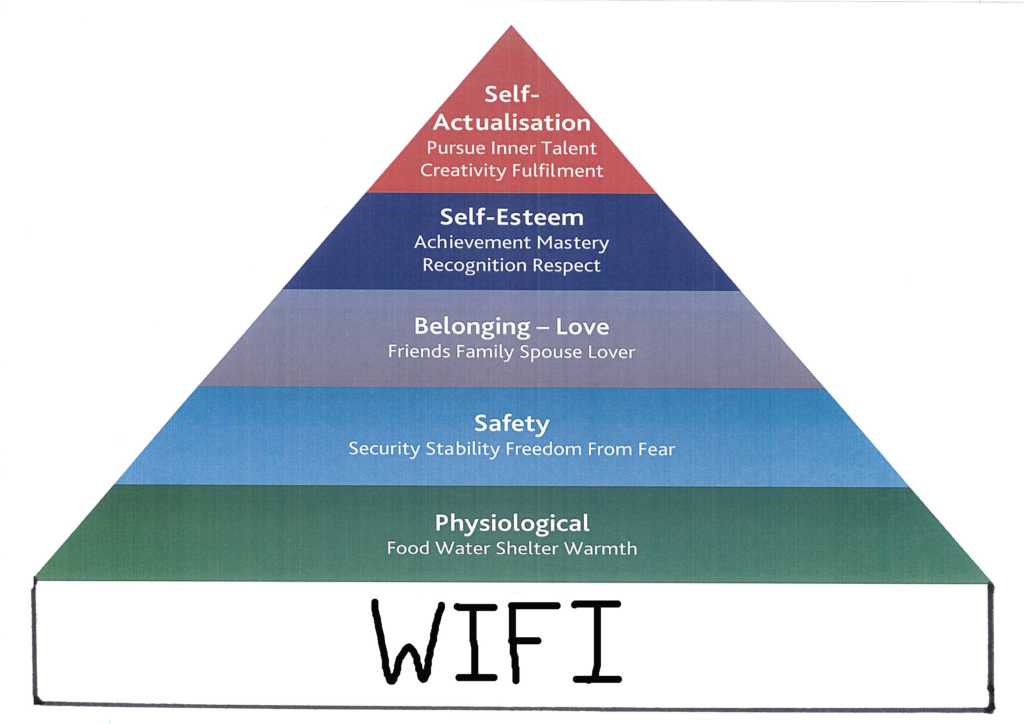
On every accredited workplace mediation training course we deliver, we talk about human needs, and Abraham Maslow’s Hierarchy of Needs is often a useful starting point for new mediators to understand the needs that parties in conflict might bring to a workplace mediation. Whether it’s about mutual respect, being valued as a member of a team, or feeling listened to, all mediations feature an exploration of human needs. I’m not sure who updated Maslow’s hierarchy for the 21st century, featuring wifi as the most fundamental human need, but I found it amusing!
I heard of a new concept of Maslow’s this week from Professor Paul Latreille, Deputy Pro-Vice Chancellor for Learning and Teaching at Sheffield University Management School, called Maslow’s hammer. In 1966, in The Psychology of Science, Maslow wrote: “I suppose it is tempting, if the only tool you have is a hammer, to treat everything as if it were a nail.” Paul Latreille’s observation was that many organisations are seeing all types of workplace conflict as suitable for workplace mediation because mediation is the only tool that they have available to deal with workplace conflict. Whilst mediation and a hammer is not an obvious analogy (given that as mediators we don’t ‘bash people into a wall’!), it made me think about all of the other tools available to help managers nip conflict in the bud at an early stage, whether it’s ‘courageous conversations’ training, conflict coaching or a ‘facilitated meeting’. To move beyond Maslow’s hammer, it is incumbent on the mediation industry to broaden the concept of conflict management beyond workplace mediation. We need to support HR professionals and other stakeholders to see that there are many options beyond mediation that may be more suitable for dealing with workplace conflict quickly and informally.


